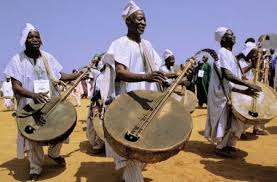Durbar
The Durbar (military parade) festival dates back hundreds of
years to when the northern emirates used horses in warfare. During this period,
each town, district and nobility household was expected to contribute a
regiment to the defence of the emirate. Once or twice a year, the emirate
military chiefs invited the various regiments to participate in a durbar for
the emir and his chiefs. During the parade, regiments would showcase their
horsemanship, their preparedness for war and their loyalty to the emirate.
Today the Durbar has become a festival celebrated in honour of visiting heads
of state and at the culmination of the two great Muslim festivals: Id-el Fitri
(commemorating the end of the holy month of Ramadan) and Id-el Kabir
(commemorating Prophet Ibrahim’s
sacrifice of a ram instead of his son).
Jaci is a small village located in the Mani LGA. It lies
along a major waterway popularly known as "Fadamar Jaci". Muhammadu
Dikko, a former emir of Katsina, began the Jaci fishing festival around 1905
when he was the District Head of Mani. He was said to have developed an
interest in the site which he visited annually for fishing and hunting in the
dry season.
After his death, his successor Alhaji Sir Usman Nagogo
continued the tradition initiated by his father, visiting the site every year
in the company of the British colonial officials living in Katsina. During the
annual gathering, fishermen converged at the site from different parts of the
Katsina Province and from the neighbouring Republic of Niger. Shortly before
the death of Usman Nagogo, the festival ceased temporarily until it was revived
in 2000.
Kusugu Well, Daura
Kusugu is where a giant snake called Sarki which only
allowed the people of Daura to draw water from the well once a week was killed
with a sword by Bayajida in the tenth century. The well and the sword are still
intact and can be seen by tourists.
The act was undertaken because the snake only allowed the
people of Daura to draw water from the well once a week. The well and the sword
are still intact and can be seen by tourists.
National Museum,
Katsina
Established in 1921 the museum is housed on the premises of
Old Katsina Training College established. It was declared an ancient
Hiistorical Monument and a National Museum in 1989. It houses archaeological
materials from different areas of the state.





No comments:
Post a Comment